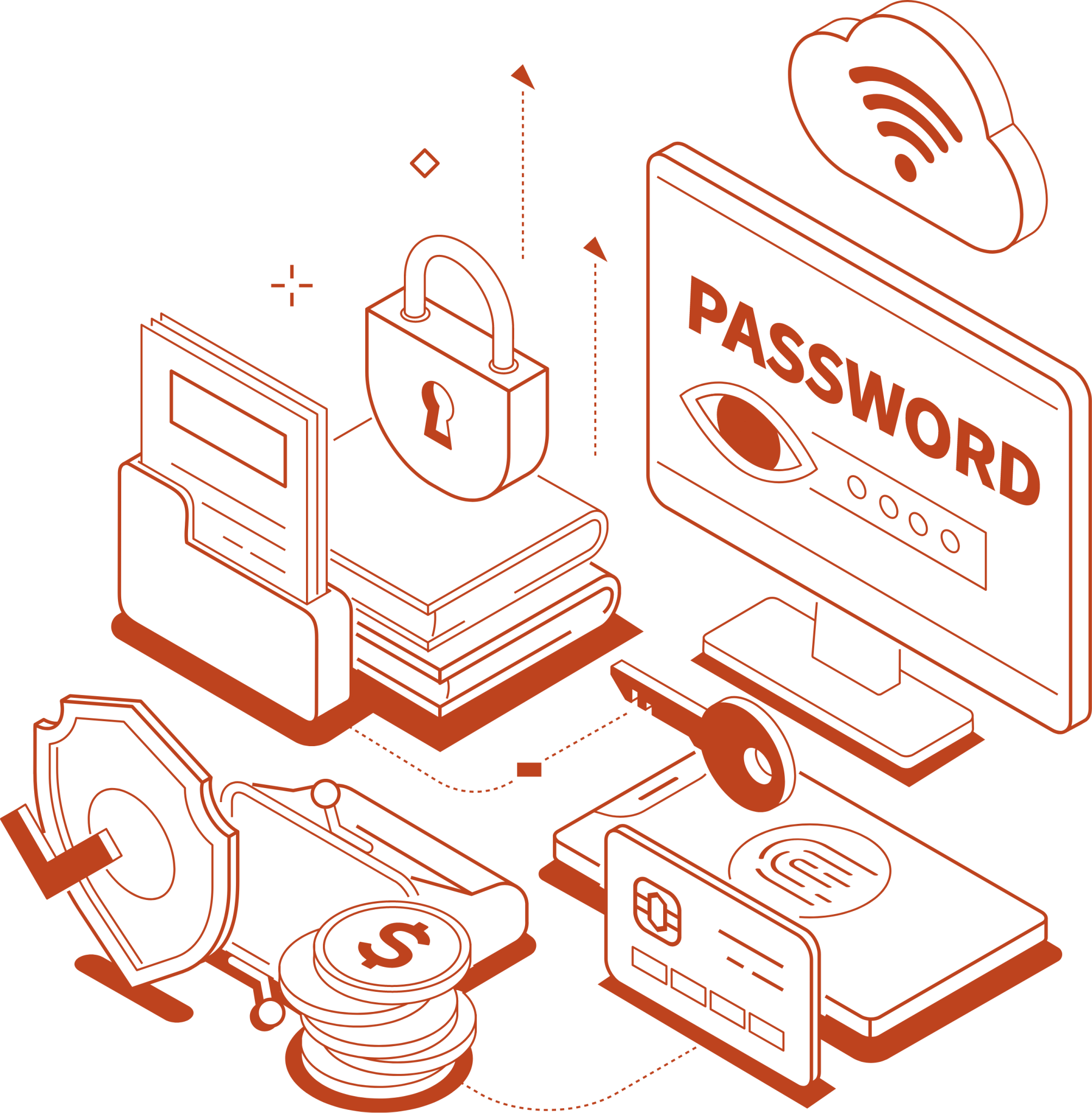One-man Band (noun)
/ˌwən ˈman ˈband/
An IT professional who wears several different hats and manages all technical aspects of a business simultaneously.
Do you ever feel like a one-man band within your organization? Are you held accountable for keeping track of servers, managing IT budgets, granting user permissions, opening administrative access, triaging help desk tickets…you get the idea? On top of all that, have you been tasked with the full planning, management, and response for the company’s cyber defense?
While it’s flattering to know that IT professionals have the capacity for varying knowledge, wearing different hats can only last so long. When you’re forced to juggle IT with cybersecurity, you have a cocktail for overload, burnout, and potential security slip-ups. Dual-role IT teams are most commonly found in small businesses. Primarily because they believe the investment of a full-time security team isn’t necessary, but also very expensive. However, statistics show that employees of SMEs experience 350% more social engineering attacks than those at larger enterprises. Yet, small businesses consistently rely on overburdened IT professionals to be a catch-all for all things Leading to underappreciation, burnout, and ultimately an insecure cyber posture.
In this blog, we’ll discuss the challenges of IT Teams doubling as security teams, and explore how cybersecurity-as-a-service can offer a cost-effective & efficient solution.
What is Cybersecurity-as-a-service?
Cybersecurity can be described as the collective methods, technologies, and practices of protecting systems, networks, and data from digital attacks. It involves a range of strategies, technologies, and best practices aimed at safeguarding sensitive information, preventing unauthorized access, and ensuring the integrity and confidentiality of digital assets.
It involves both proactive measures, such as risk assessments, vulnerability scanning, and security awareness training. Paired with reactive measures like incident response, forensics, and recovery plans to address and mitigate the impact of breaches or cyber-attacks. Ultimately, the goal of cybersecurity is to create a robust, multi-layered defense system that can adapt and respond to the ever-evolving landscape of cyber threats.
Cybersecurity-as-a-Service or CSaaS is a model of cybersecurity management in which the responsibilities and duties are fulfilled by a 3rd party outside of your organization. The amount of coverage and services vary by vendor. But they can include a medley of different solutions including but not limited to: data loss prevention, cloud asset scanning, dark web scanning, endpoint protection, email protection, secure browser (DNS), 2FA (two-factor authentication), SSO(single sign-on), IAM (identity and access management) and more.
Benefits of Cybersecurity-as-a-Service
Through a CSaaS company, you have a dedicated security team to manage all proactive and reactive cybersecurity tasks. Partnering with a CSaaS company allows the simplicity of having all your security services and software, under one umbrella. Therein allows you to have greater visibility and protection in the event of a possible cybersecurity event.
CSaaS offers several multifaceted advantages. Through a CSaaS company, a small company with limited resources can access enterprise-level security solutions, fortifying its defense against potential cyber threats.
Another benefit is the cost. The effect is two-pronged; subscribing to a CSaaS provider is cost-effective because your organization does not need to purchase costly security infrastructure or hire expensive security experts to advise/implement tools.
Scalability is another advantage. As your company experiences growth and demands on your infrastructure and systems follow suit, a seasoned CSaaS provider can offer you solutions that grow with and bolster your business.
As you add more employees to your roster, you don’t have to worry about updating the backend security for new employees, their new workstations, or account management/permissions, since it will all be done automatically by your CSaaS.
The CSaaS model ensures continuous monitoring and real-time threat detection, allowing immediate responses to emerging risks. Additionally, CSaaS often includes regular updates and patches, which are crucial for maintaining a strong security posture in the face of evolving cyber threats. Outsourcing cybersecurity to a dedicated service provider also allows companies to focus on their core operations without compromising their security posture.
If you’re an overextended IT Professional, this sounds like the answer to your prayers, but how would you know if it’s the right fit for you?
Is CSaaS right for you?
While the aforementioned benefits are great, nothing in life comes without any risks. Something to keep in mind with any CSaaS providers is data privacy concerns and a dependency on third-party providers. Another facet to keep in mind is the critical aspect of compliance. Different business sectors adhere to different industry regulations.
Mitigating these risks involves meticulous consideration and vetting of service providers. A thorough evaluation and selection process can aid in finding the right fit for specific business needs and compliance requirements.
So how would you choose the right CSaaS provider for your organization?
Choosing the Right Cybersecurity Service Provider – MSP or MSSP
The terms MSP and MSSP are often synonymous with one another, after all, they are separated by one extra letter, right? While there are similarities the two differ in what they can offer you.
An MSP is a managed service provider that specializes in making sure that all of your business’ endpoint assets and data are available at all times for your employees and customers to utilize.
An MSSP is a managed security service provider, it provides the same benefits as an MSP with the added benefit of taking a defensive cyber security stance. Traditionally they do not concern themselves with IT helpdesk tasks but more so with IT Security. Targeting security needs with more granular detail as befit their task of threat detection, endpoint protection, and response, identity and access management, and authorization tools.
With that said, analyzing your business needs is critical to making the right choice between these two services. Ask yourself the following questions:
- What services do we need?
- What does my organization need an MSP / MSSP?
- When does my organization need an MSP/ MSSP?
- Who should deliver this service?
Questions that you should ask an MSP / MSSP:
- How will they tailor their services to your tech stack?
- What enterprise-level solutions do they offer?
- What are the SLAs and metrics that they offer?
- How will your environment be secured and monitored?
- Are they SOC-certified?
If you’re in the market for an MSSP, look no further than Hada Security.
Implementing Cybersecurity-as-a-Service
Hada Security offers small and medium-sized businesses to improve and harden their security posture. Help us identify your existing security gaps, mitigate your risk, and monitor + respond to new threats on your behalf.
With Hada Security the process could not be any simpler, implementation can be completed in less than one hour. The only specification that Hada Security requires is the creation of an admin-level account in your custom directory, be it Active Directory Domain Services or Google Workspace. Better yet, once Hada has access, you can delete that account since it will no longer be needed going forward.
If you’re curious about your current security posture, get a free risk assessment to gain insight into your overall security score.






